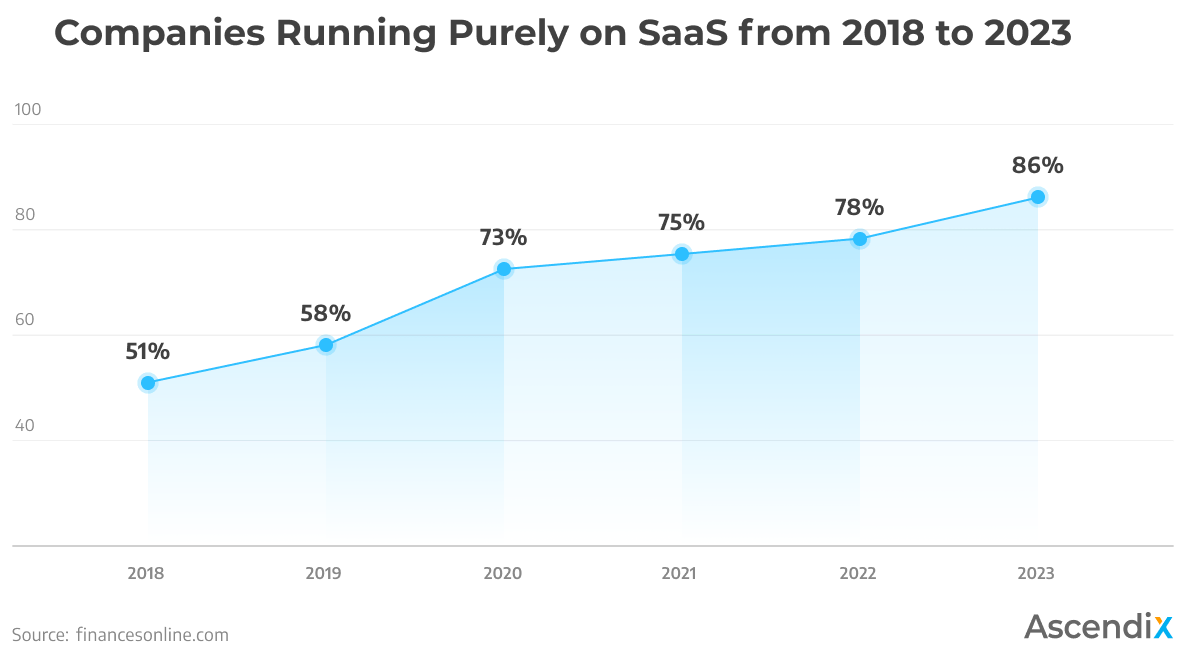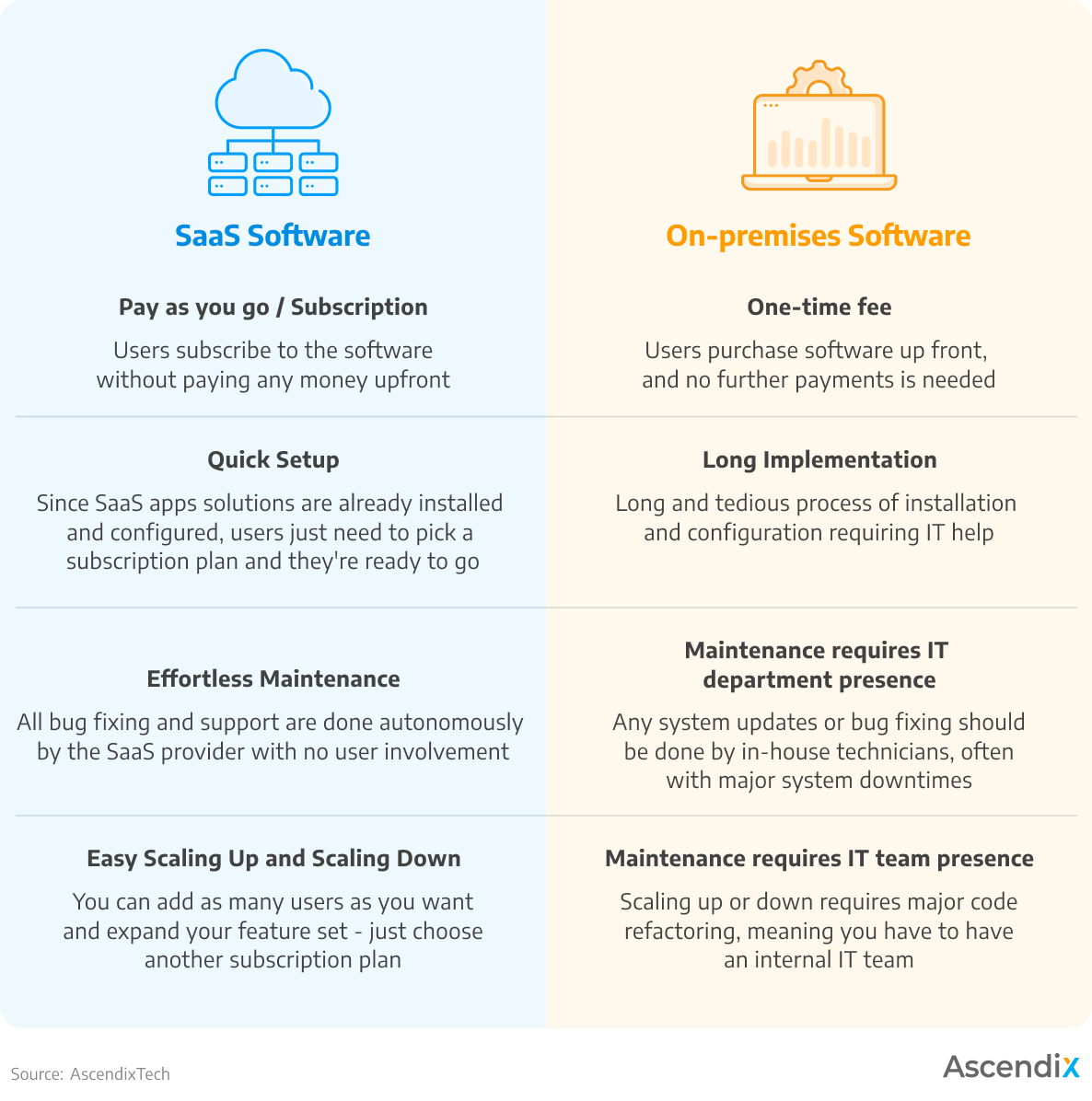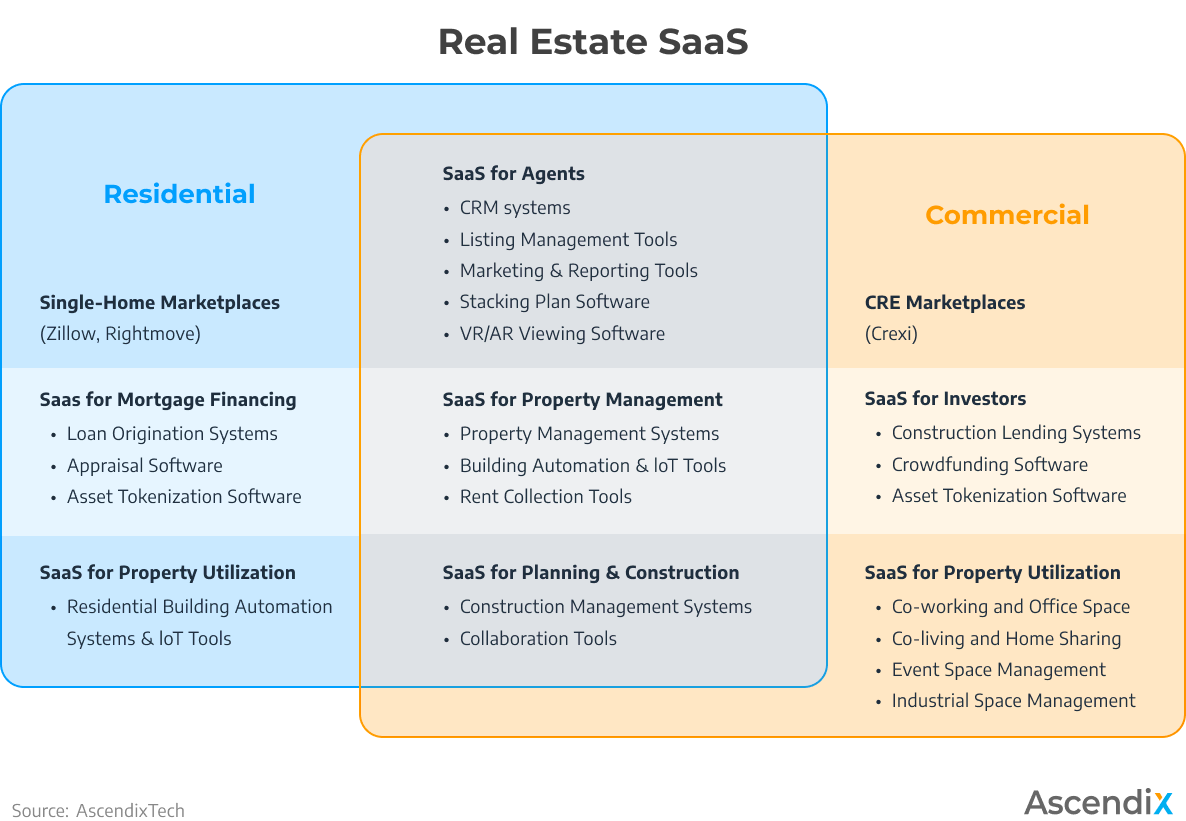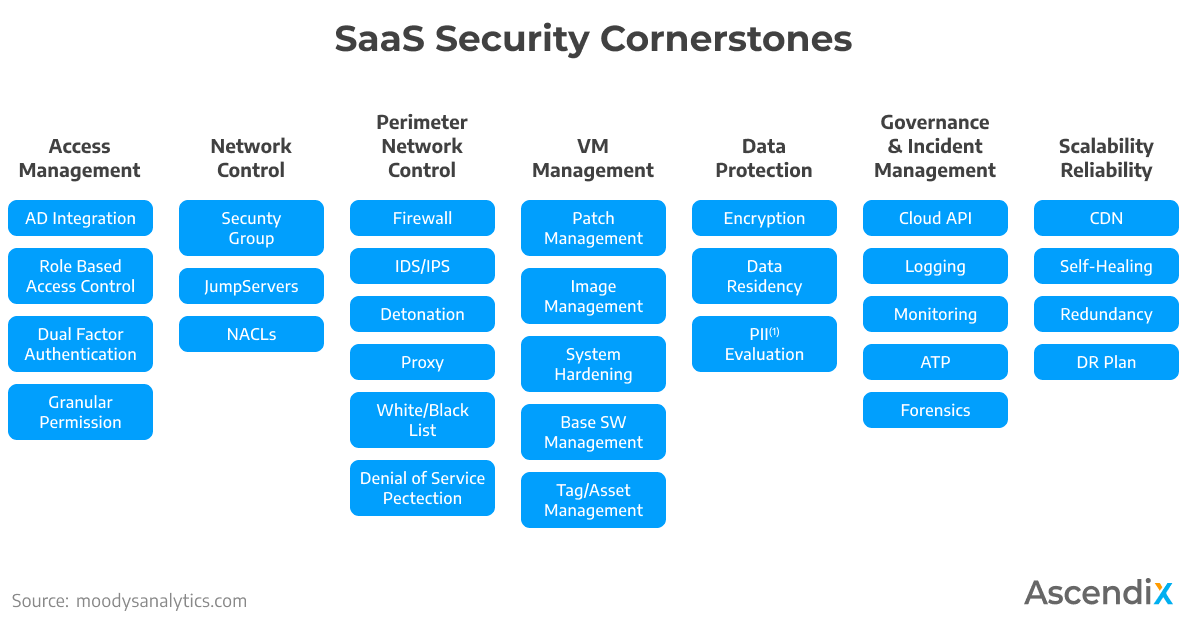Looking for Help with Building a Proptech Solution?
We’ve got 2 decades of expertise in real estate and SaaS development. Trust your project to Ascendix professionals.
With more and more real estate companies turning to software to automate processes and streamline operations, Proptech SaaS companies like Buildout and Zillow are gaining momentum.
And if in some industries you will not surprise anybody with a cloud-based app delivered over the Internet, in real estate – untouched by technological innovation for decades – the full potential of SaaS Proptech is yet to be unveiled.
Having operated at the juncture of proptech and SaaS for more than a decade, we have authored 17 real estate SaaS products and overseen numerous custom SaaS development projects and are ready to provide you with some key takeaways and lessons learned on how to successfully develop SaaS for real estate.
SaaS is an acronym for Software-as-a-Service – a subscription-based software distribution model in which a cloud provider delivers a ready-to-use solution to its customers via browser or mobile app with no installation needed.
To assess the service, users simply pay a fixed “rent” fee usually monthly or annually according to a chosen subscription plan, while software updates and system maintenance is a sole responsibility of the SaaS provider. All customer data and the software itself are stored remotely on a provider’s servers, commonly referred to as “cloud.”
In a nutshell, SaaS is software you don’t own but simply use for a time, pretty much like Uber for ordering a taxi or Canva for designing visual content.
Multi tenancy model. The provider delivers one software instance to multiple customers (tenants) at a time, allowing them to customize some parts of the application, such as the color of the user interface (UI) or business rules but not the application’s code.
Cloud computing. The provider delivers the software over the Internet at the flat rate / per user / per storage / pay as you go pricing (see below). So, instead of buying, owning, and maintaining physical data centers and servers, customers can just pay a “rent” fee and access technology services when they need them.
Pricing model. The most common monetization model for all SaaS products and proptech SaaS in particular is flat rate pricing, when users pay a fixed fee for a defined set of features, but there are more pricing options out there:
We’ve got 2 decades of expertise in real estate and SaaS development. Trust your project to Ascendix professionals.
Oh yes. For better or worse, the world hasn’t seen a single on-premises software company founded since 2007 (source), so, you might well call traditional systems that live exclusively on our hardware nearly extinct species.
And just looking at the staggering numbers of SaaS companies flooding the technology market, one thing is crystal clear: SaaS is the new normal of software development and distribution, and it doesn’t go anywhere soon.
But don’t just take my word for it. The graph below shows that companies are slowly but surely drifting to the cloud, more and more often relying on Software-as-a-Service solutions as their core technology choice.
Today the number of firms using SaaS stands at 78%, but considering the dizzying pace of how quickly cloud computing penetrated the major business spheres, it will be a small surprise if this estimate will reach 100% in several years.

Companies Running Purely on SaaS | SaaS Proptech
The real estate industry has long been known for its loyalty to legacy systems and primitive productivity tools like Excel and Outlook, dating back to the first wave of CRE technology innovations.
This outdated technology has not only hindered the digital transformation of real estate for years but also is costly to maintain, upgrade, and scale. Unfortunately, this list only goes on.
A few viable options for the industry would be to migrate old systems to the cloud or abandon them completely and seek salvation in proptech SaaS solutions.
Either way presents a myriad of benefits and fresh opportunities for key stakeholders of a brand-new SaaS proptech app.

The Benefits of SaaS for Real Estate vs On-Premises Software
Part of the beauty of software as a service is that it’s easy to get started. Since proptech SaaS solutions are already installed and configured, customers just choose a subscription plan they like, and they are good to go, with no system downtime or expensive technology setup.
Whether it be a flat rate or “pay as you go” usage fees, customers have much more freedom in terms of how they spend their money. They can buy a subscription for a period and functionality they need and cancel it when they no longer need the service.
Cost, just like the speed of implementation, are the most lucrative benefits proptech SaaS companies market to real estate agencies as the latter tend to be cautious about making big upfront payments and would rather pay less for a partial improvement than making a huge one-time investment and suffering major system downtime.
Another advantage of real estate SaaS products highly valued by real estate agencies, which typically don’t have in-house IT personnel, is that they don’t have to worry about technical matters as seamless upgrades and system maintenance are already included in their ongoing subscription charge. On top of that, in case of any performance issues, the SaaS proptech provider will be there to help, again, at no extra charge.
The multi-tenant architectures most real estate SaaS software is built on can scale elastically to meet customer demands. You can add as many users as you want and expand your feature set to keep up with your business growth – and you only pay for what you use.
See how AscendixTech can help you close more deals and improve your prospecting.
Accounting for $33.6 trillion in the US alone, real estate is the biggest industry globally with multiple facets like construction, brokerage services, real estate transactions, each having domain-specific issues and headaches. Multiply this by the number of real estate stakeholders (buyers, sellers, renters, landlords, etc.), and you’ll arrive at an estimate of how many real estate SaaS companies and solutions could be there.
The good news is they are not there yet. So, there is a lot of low-hanging fruit for those who decide to embark on efforts to build a disruptive proptech SaaS solution.
To start with, there may be commercial real estate SaaS software addressing the needs of the main CRE players (investors, renters, appraisers, real estate agents, etc.) revolving around commercial real estate (office spaces, industrial properties, multi-family, etc.); and residential proptech SaaS solutions for residential property stakeholders (renters, landlords, real estate agents, etc.) buying, selling, representing, and managing residential physical spaces (single-family houses, apartments, townhouses, etc.).
Real estate agent Saas, property management SaaS, and planning & construction SaaS can cater to both domains – residential and commercial.

Examples of Real Estate SaaS Software
CRM stands for Customer Relationship Management platforms that are designed to integrate all business processes, from prospecting to deal closing, into one system, thus improving team collaboration and the company’s data aggregation. The best real estate SaaS CRM systems are Apto, Buildout, and AscendixRE, all built on Salesforce – the world’s biggest CRM SaaS provider.
These tools help real estate agents to create and maintain property records and listing websites. Listing Management solutions easily integrate with the existing CRM system to automatically pull the minutest details, such as property type, property address details, a property built year, property interior and exterior features, and amenities of the property.
These are cloud-based real estate SaaS platforms that seamlessly connect builders, designers, developers, engineers, and tradespeople throughout a construction project, ensuring adherence to budgets, sustainability principles, and performance requirements (Built, Procore, Buildertrend).
Find more about what proptech solutions are here.
Check out the overview of the proptech consulting and software development projects we delivered to our clients.
While this is true for almost all SaaS applications, real estate SaaS users may be especially picky toward the solution they’re going to invest a huge amount of money in. And don’t be tricked by the fact that real estate customers have long been underserved by technology – they will still want their applications to look pretty and straightforward. This is mainly because:
As your end-users are going to work with sensitive information, like credit bank details, transactions, etc., your proptech SaaS solution should comply with the below SaaS-specific security requirements (source):

Proptech SaaS Security Cornerstones
Building either residential or commercial real estate SaaS development requires in-depth industry knowledge and, ideally, technical experts on board who not only understand the specifics of building SaaS but also speak real estate language.
If you’ve got a ground-breaking idea but lack industry expertise or simply want to share the burden of development , reach out to Ascendix – a proptech development expert with almost two decades of practice-based experience in real estate.
Tell us more about your project and we’ll make sure to provide you with the knowledge and resources to make innovation happen for you and your business.
Alina is a proptech technology expert and a storyteller at Ascendix, investigating the real estate market and sharing her insights and tips with up-and-coming proptech startups, established real estate agencies, and industry stakeholders. She talks about real estate technology, business automation, and industry news.